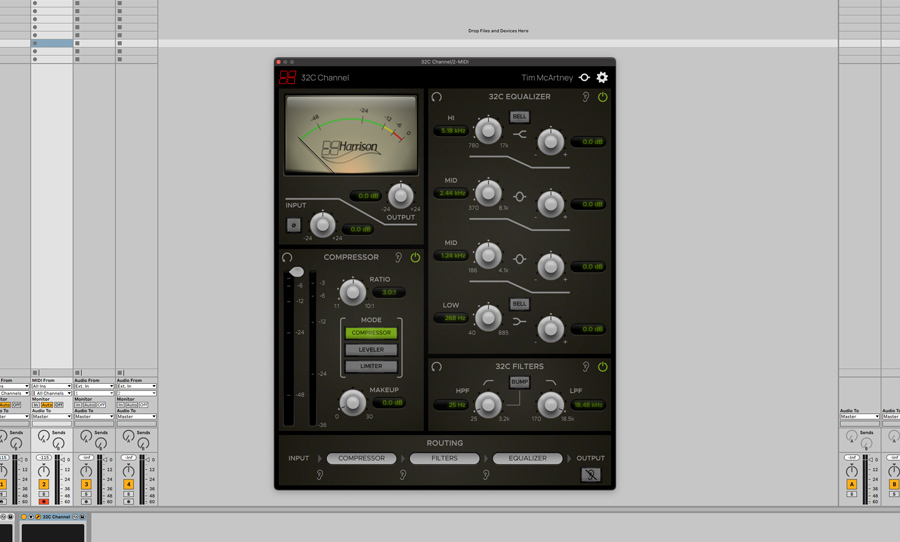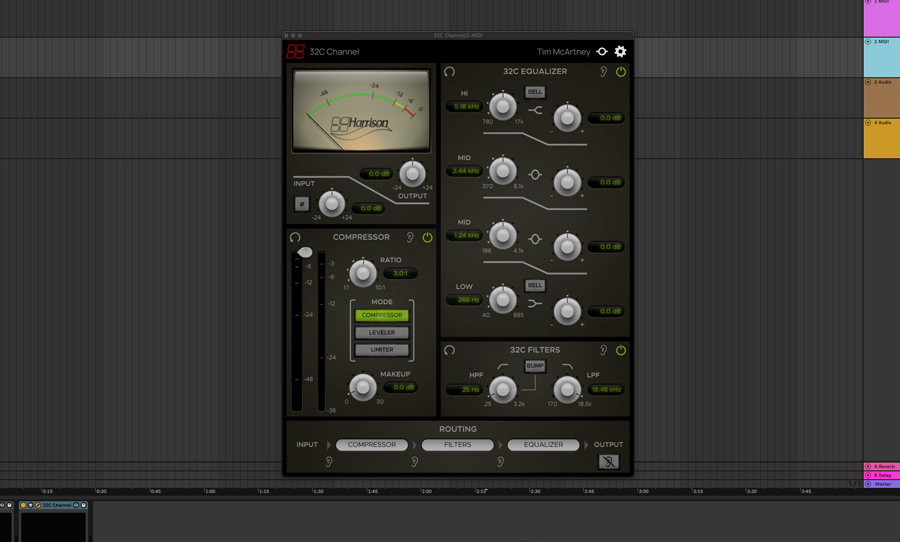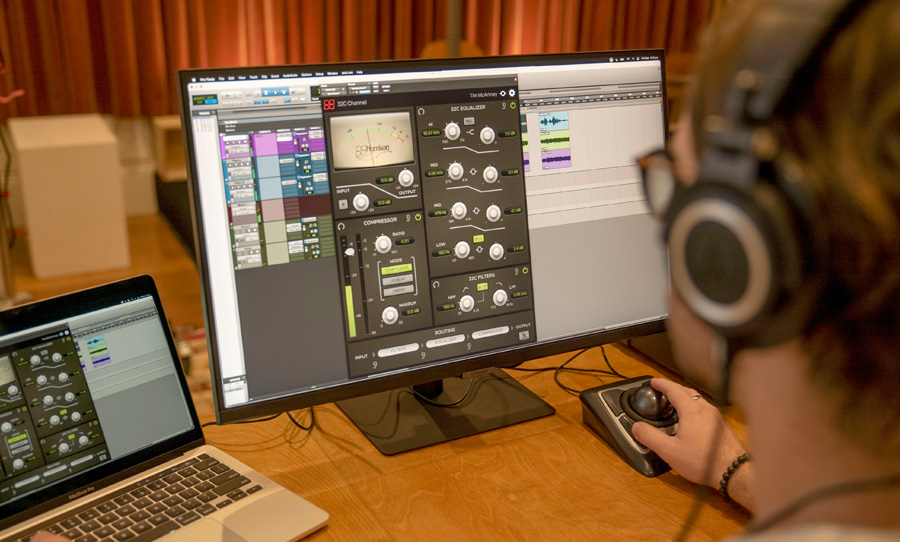Harrison’s 32C Channel is a plugin that replicates a channel strip from the 32 series recording console, bringing a modern adaptation of a classic to your DAW.
Harrison cemented its reputation in the golden age of large-format consoles. As a matter of fact, a little album called Thriller was mixed on a Harrison Console: which speaks to its functionality, components, and quality of sound. In 2022, Harrison can be part of your in-the-box workflow, with the 32C Channel plugin.
Harrison is still making large format recording consoles and high-end outboard equipment, however, they are making their name in the plugin world with recreations of their own classics from yesteryear. Harrison is not trying to reinvent the wheel here, but simply make the best wheel on the market.

An in-the-box classic
The Harrison 32C Channel combines three of the company’s renowned processing elements — EQ, Filter and the Mixbus Compressor — which are all adjustable in their signal flow. This modularity was my favourite part when experimenting with the plugin — moving the EQ after the Compressor, then moving the Filter to the start of the Routing so the Compressor didn’t have to work as hard.
Starting from the top left of the Harrison 32C Channel, you have a clear VU meter that indicates the output level, just like a recording console would. The first module holds -/+ 24dB Input and Output knobs, and a Phase button. Directly under that is the Compressor module featuring a threshold slider — with digital meters for input and gain reduction, a ratio knob (from 1:1 to 10:1), three modes — Compressor, Leveler, Limiter, and a Makeup gain knob of up to 30dB.
On the other side of the plugin is the four-band 32C Equalizer. The four bands consist of Hi (780Hz to 17Khz), Hi-Mid (370Hz to 8.1kHz), Low-Mid (186Hz to 4.1kHz), and Low (40Hz to 885Hz) are easily tweaked by either knobs or a digital display. Hi and Low can be switched to Bell Mode, but all four bands keep their frequency Q factor. The HPF (High Pass Filter) sweeps between 25Hz to 3.2kHz and the LPF (Low Pass Filter) sweeps between 170Hz and 18.5kHz.
At the bottom of the Harrison 32C Channel is the Routing section, which really shines. I’ve used a lot of console plugins and have found if I wanted to move the elements around, it was either unclear or a disruptive deep dive. Clearly displayed on the bottom, it’s as easy as clicking and dragging either the Filters, Equalizer, or Compressor.

Special features
Harrison has maintained the classic design and layout of its consoles, however, there are a few special new features that are very welcome. Every section has a reset button, an ‘ear’ logo (more on that soon), and a power button. I found that the power button was very useful for comparing sounds with and without the compressor, for example.
The most noteworthy feature, however, is the aforementioned ‘ear’. It’s a solo and listen section, meaning you can ‘hear’ it on its own as it greys out the other sections. Very useful use you feel you want to really just hear an adjustment you made — good or bad!
Overall, I really enjoyed the sound and functionality of this plugin. I experimented with this over a recording of a live performance and I found that it seamlessly slotted into a mixing workflow — just like the hardware version of this iconic console.
Head over to Harrison Consoles for more details.



